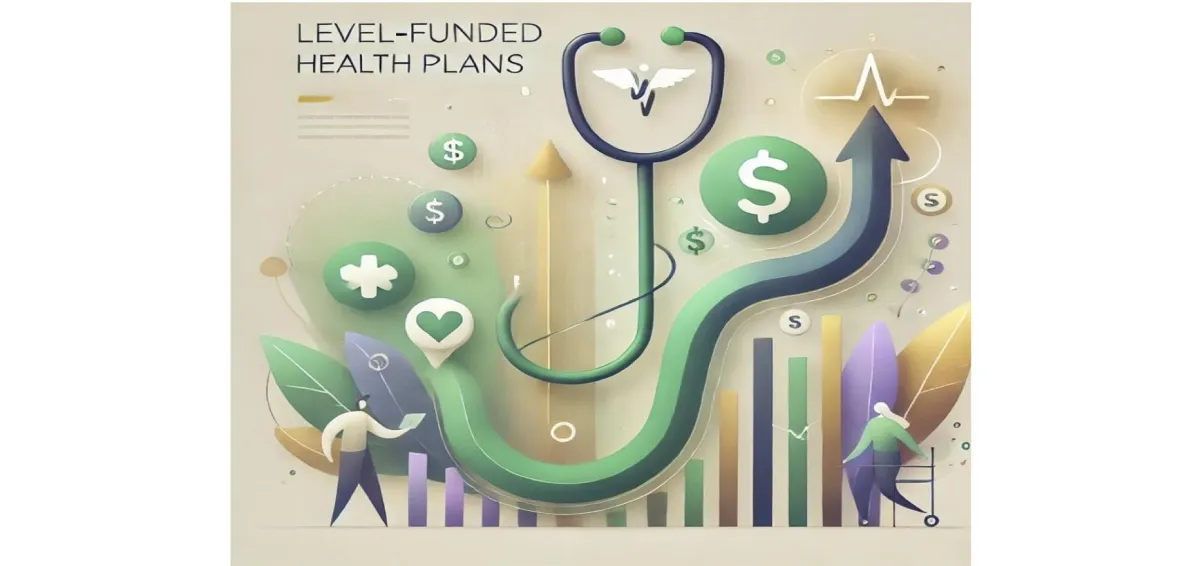The Human View™ Blog

Doubling Down on Employee Engagement for Level-Funded Plans
Level-funded health plans (LFPs) continue to be popular alternatives to fully-insured. So it’s important to focus on maximizing engagement with the cost mitigation tools built into these plans. Otherwise, you'll leave significant value on the table.

When an employer moves to a level-funded arrangement, they're generally looking for the best of both worlds – the potential savings and flexibility of self-funding, without the full complexity and risk exposure. Even with the additional compliance considerations – from ERISA requirements to transparency reporting obligations – most carriers and TPAs are well-equipped to help navigate these requirements, so that the employer and its HR and benefit teams can focus on what matters most: maximizing the value of their new plan design.
Still, for all the promise of better cost management, most employers are capturing only a fraction of the available savings. Why? Because employee engagement with cost mitigation tools remains staggeringly low.
Let's talk real numbers. A mid-sized employer with 200 employees can easily spend around $2.5 million annually on healthcare (average $12,500 per employee). Our data shows that effective use of cost mitigation tools can generate significant savings:
Steering to high-value providers can reduce imaging costs by 35-40% ($50,000-75,000 annual savings)

Active chronic condition management programs cut ER visits by 25% ($100,000+ annual savings)
Telemedicine utilization above 25% can reduce urgent care costs by 20% ($30,000-40,000 savings)
Second opinion services for complex procedures yield alternative treatment plans 30% of the time (potential savings of $150,000+)
Yet current utilization rates tell a sobering story. Telemedicine usage hovers around 8-10%. Price transparency tools see usage rates below 15%. Wellness program participation? Often stuck in the 20-30% range, even with incentives in place.
And what's perhaps most frustrating is that, once the LF Plan is in place, and the employer hits these upper limits on engagement in the very tools that are supposed to help keep costs down, consultants and vendors often adopt a shoulder-shrug response: "Well, that's about the industry average!"
It's like buying a turbo-charger for your car, and then not using it.
The good news? We're seeing some employers buck this trend through more sophisticated engagement strategies. One approach that's showing promise involves understanding and leveraging employee personas. By recognizing that your workforce isn't monolithic – that it comprises distinct groups with different motivations and communication preferences – we can dramatically improve tool utilization.

For instance, we know that some employees are natural "Self Achievers" who will eagerly embrace new health tools if presented as part of their personal development journey. Others are "Priority Jugglers" who are so busy they need to know they'll see immediate, practical value before they'll engage. By tailoring your messaging and outreach strategies to these different personas, the impact of LF Plans' built-in tools can be better realized. How about:
Telemedicine utilization jumping to 25-35%?
Price transparency tool engagement reaching 30-40%?
Preventive care compliance increasing by 20-25%?
Modern analytics and engagement platforms - now with AI-enhanced and Persona-Infused messaging - can now help optimize these engagement strategies by:
1. Analyzing patterns in tool utilization data to identify engagement barriers
2. Predicting which employees are most likely to benefit from specific interventions
3. Generating personalized communication strategies based on past engagement patterns
4. Continuously optimizing messaging based on real-time response data

By so doing, consultants and brokers can help their clients take a more proactive stance on engagement. Remind employers that the TPA or carrier can typically handle most of the heavy lifting around reporting and documentation for ERISA and HIPAA compliance, and other regulatory requirements. Take the expanded plan data, organize it into strategic information, and focus on what can now be known about where the weak links are in the LF Plan performance. Then focus towards driving more engagement in the built-in tools and programs that make these plans truly valuable.
Here are some next steps:
Audit your current tool utilization rates against industry benchmarks
Implement AI-enhanced and Persona-Based communication strategies that respect different employee preferences
Set aggressive but achievable utilization targets for each cost mitigation tool
Monitor and celebrate progress to create positive momentum
The reality is that level-funded plans were designed to give employers more control over their healthcare costs. But that control is meaningless if we don't actively drive engagement with the tools that make cost control possible.
The technology is ready. The potential savings are proven. The only question is: Are you - and your clients - ready to take a more aggressive stance on engagement?
They, their employees – and everyone's bottom line – will thank you for it.
~ Mark Head
© 2025. All Rights Reserved.

Click the green button or the blue button (below) to visit our scheduling pages.




Mark Head
President
With 4 decades of combined experience in employee benefits consulting, wellness and health management, Head brings a unique combination of dynamic perspectives into a clear vision of where the future of health care is moving - and it's moving towards deeper human connection, awareness, and engagement...
Follow Us On
© 2015 - 2025, Benefit Personas, LLC. All Rights Reserved.

